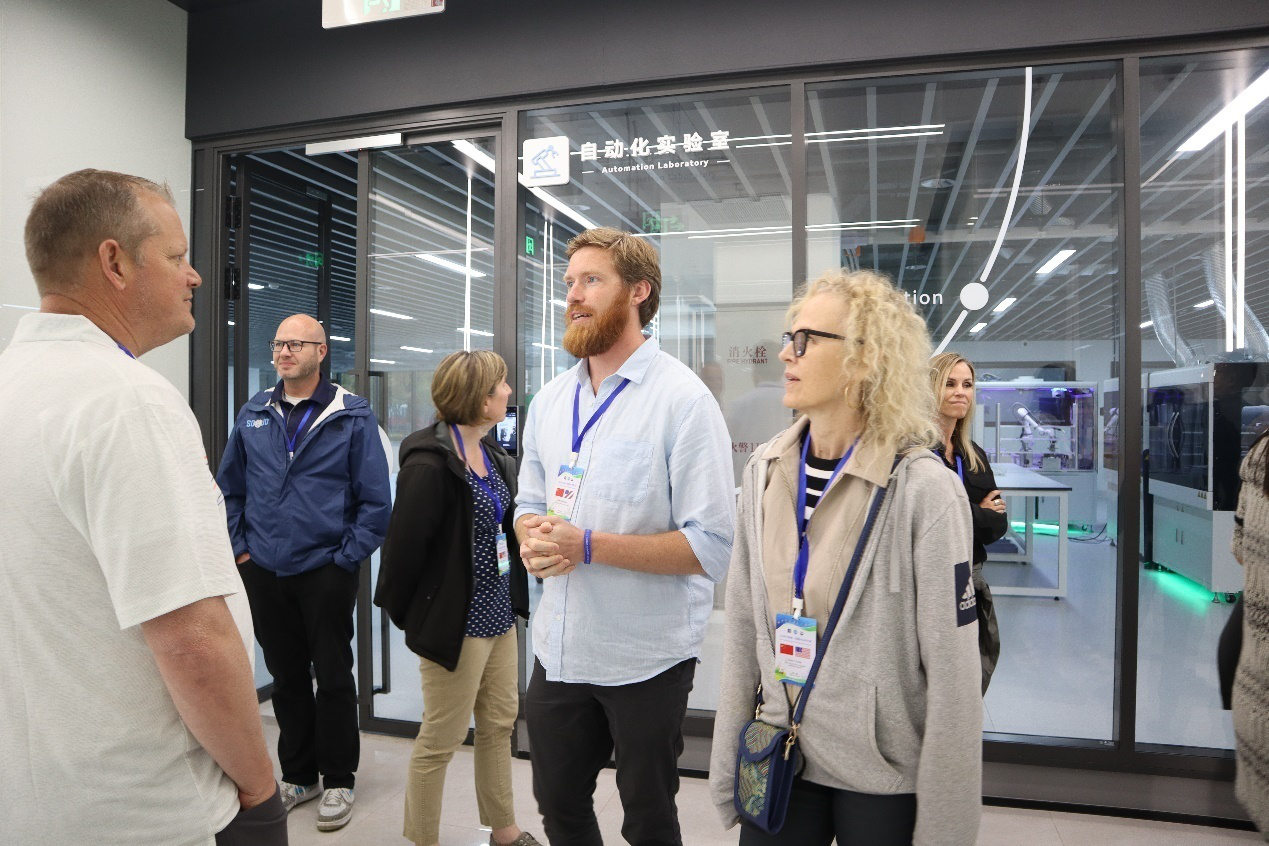BEIJING, June 30 (Xinhua) -- The journey of a single drug tablet, from target validation and drug discovery to clinical trials, is often fraught with obstacles, challenges, immense costs and high risks. According to statistics from the Tufts Center for the Study of Drug Development, the average cost of developing a new drug is around 2.6 billion dollars, taking an average of 14 years. However, the advancement of cutting-edge technologies like AI has significantly accelerated the drug development process, not only reducing costs and increasing efficiency but also enabling breakthroughs from the ground up. As AI converges with other cutting-edge technologies like quantum physics and robotic experimentation, an increasing number of examples are opening up new possibilities for drug development.

The photo shows the large-scale deployment of AI robots in a lab. (Provided by XtalPi)
Pursuing Precision and Efficiency: The Challenging Path of AI+Quantum Physics
Leveraging AI+quantum physics as its core technology, XtalPi has taken the lead in conquering the challenging problem of accelerating and improving crystal form prediction in drug development, showcasing the power of China's smart drugs.
In 2016, Pfizer, a U.S. company, organized a global crystal form prediction blind test competition, bringing together top biotechnology institutions and technology companies from around the world to compete. XtalPi's self-developed AI+quantum physics algorithm emerged victorious with a 100% correct prediction rate, securing a 10-year strategic partnership with Pfizer and multiple international orders. Pfizer’s Chief Scientist Geoff Wood said that this collaboration has transformed the way Pfizer conducts molecular screening and this breakthrough holds promise for improving the industry landscape.
Fast forward to 2022, in its involvement in the development of Pfizer's PAXLOVID drug, XtalPi accurately predicted the preferred crystal form in just six weeks, significantly shortening the six-month drug development period under traditional manual research methods and accelerating the drug's time to market. "This process used to take too long, but with the support of China's AI+robotics platform technology, we can now test almost every small molecule project," said Bruno Hancock, global head of materials science at Pfizer, based in Groton, Connecticut.

Under the command of the system, a logistics robot is transporting experimental reagents. (Provided by XtalPi)
Within XtalPi's AI robotics laboratory, hundreds of robotic automation workstations stand in formation, resembling a well-disciplined army operating under the command of a central system. They perform a symphony of tasks: unscrewing test tubes, weighing powders, precisely adding reagents, transferring liquids, and stirring magnetically. Logistics robots ensure the timely delivery of experimental reagents and consumables. Beyond these visible actions, a multitude of unseen processes are also meticulously orchestrated. The robots not only execute tasks but also serve as meticulous record keepers, continuously feeding vast quantities of standardized data into AI algorithms. This data empowers researchers to design and optimize experimental procedures.

Under the system's command, the robot is carrying out an experiment. (Provided by XtalPi)
"Precision and efficiency are paramount, and our solutions must withstand the scrutiny of science." Within the confines of the laboratory, over 200 AI+quantum physics algorithm models function as a team of explorers, surpassing traditional human methods by two to five times in their pursuit of new drug discoveries. Their dedication has garnered the approval of pharmaceutical giants like Merck, Pfizer, and Johnson & Johnson, who rely on these robots to provide automated solutions for the bottlenecks that hinder biomedical research.
A Digital Intelligence Platform with Global Competitiveness

The robot workstation in the laboratory and the AGV trolley cooperate with each other around the clock. (Provided by XtalPi)
In a collaborative AI-powered small-molecule drug discovery project between XtalPi and Eli Lilly, a U.S. pharmaceutical company, XtalPi's digital intelligence platform ensured data quality throughout the process, elevating the drug candidate molecules' therapeutic properties above the predetermined benchmark.
The platform initially utilized an AI model library to identify the most effective drug molecule combinations. Next, the platform embarked on a "smart manufacturing" journey, akin to transforming blueprints into reality. Hundreds of robotic workstations synthesized the selected drug molecules one by one. Subsequently, the platform conducted a series of tests, including biochemical assays, cellular tests, and pharmacological and pharmacokinetic studies, to assess the efficacy and safety of the candidate drug molecules. Upon completion of the tests, the platform further optimized the design of the drug molecules, refining them to achieve the desired effect.
Wang Rong, head of Lilly China Innovation & Partnerships (LCIP), lauded the project as a large-scale and highly challenging collaboration in the AI domain. Both parties committed their top-notch professional teams and substantial resources, establishing an AI-based compound design, synthesis and validation processes, and yielding high-quality novel molecules. Eli Lilly has expressed confidence that Chinese companies' capabilities in AI-powered drug discovery are comparable to those of global leaders.
Fulfilling Social Responsibility, Creating a Feast of Intellectual Exchange

In July 2023, American scholars visit XtalPi's innovation lab. (Provided by XtalPi)
Ma Jian, CEO of XtalPi, said the innovation lab in Boston is committed to deepening innovation exchange and promoting industry collaboration. It regularly hosts open days and other exchange activities, serving as a bridge for the exchange of cutting-edge pharmaceutical ideas and wisdom. At the first open-day event, the lab invited scientists from renowned pharmaceutical companies such as Merck, Pfizer, and Novartis to jointly explore the mysteries of AI-powered drug discovery and automated synthesis. Here, the innovation lab acts as a helmsman, actively fulfilling its responsibilities to the environment and society. It is dedicated to promoting the United Nations Sustainable Development Goals, particularly the goal of promoting inclusive and sustainable industrialization and innovation.
As multi-level integration becomes a new trend in industrial development, and as innovation platforms become a new approach beyond traditional methods, the platform-driven cross-industry integration model is standing at the forefront of the development of the future big medical industry and providing new ideas for the development of AI-empowered medical industry clusters. (Yang Boyao)




 A single purchase
A single purchase









